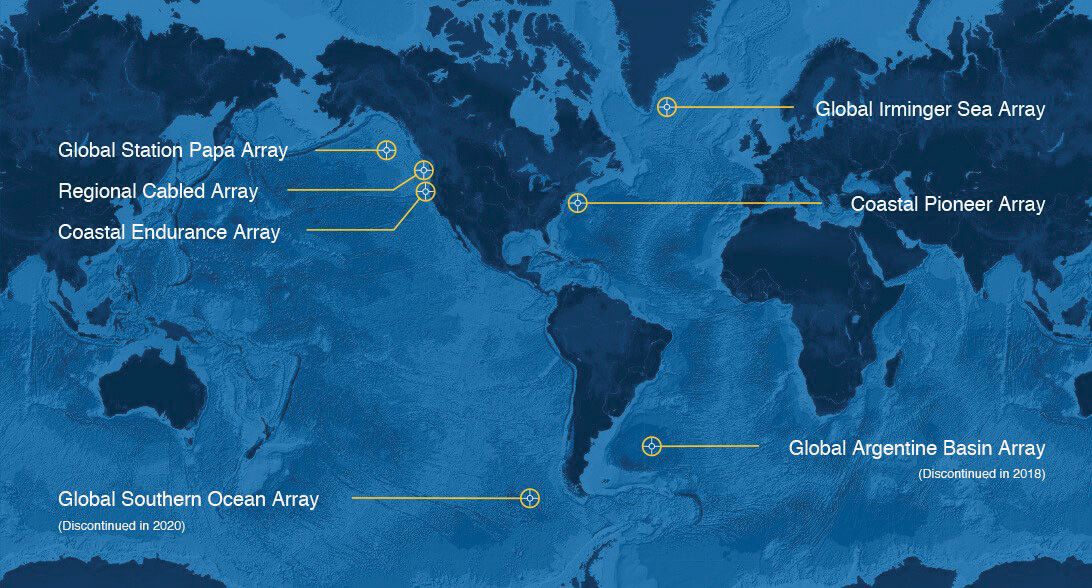 Teledyne Marine’s gliders and acoustic modems have become key enabling technologies for the remote transmission and collection of data from the National Science Foundations Ocean Observatories Initiative.
Teledyne Marine’s gliders and acoustic modems have become key enabling technologies for the remote transmission and collection of data from the National Science Foundations Ocean Observatories Initiative.
OVERVIEW
Teledyne Webb Slocum electric gliders and Teledyne Benthos acoustic modems are a key part of the Ocean Observatories Initiative (OOI), a National Science Foundation (NSF)-funded program for long term observation of the world’s oceans. A description of OOI from the oceanobservatories.org website:
The Ocean Observatories Initiative (OOI) is a science-driven ocean observing network that delivers real-time data from more than 800 instruments to address critical science questions regarding the world’s ocean. OOI data are freely avail-able online to anyone with an Internet connection.
The OOI project comprises numerous data collection mooring arrays and gliders. Some OOI moorings are cabled to shore, while others have surface buoys which can be used for data offload. For moorings with surface expressions, inductive modems are used to trans-fer data from instruments up to 1500 meters deep, and acoustic modems used to commu-nicate with deeper instruments. Others, such as Global Station Papa, have completely submerged elements that rely on a data truck scheme to exfiltrate collected data using acoustic modems. In this case inductive modems are used to gather data from the sensors for eventual offload via acoustic modem to the data truck AUV. The submerged mooring array with data truck offload is the case being considered here
The OOI was commissioned and accepted by the NSF in 2016 and has been steadily deliv-ering data from across the OOI through the Internet 24/7/365.
Moorings
OOI moorings house different types of sensors, depending on the observation needs at each location. In the cases where a data truck exfiltration is needed, the mooring sensors produce data which is aggregated and multiplexed by a microprocessor. This multiplexed data stream is then pushed to a Teledyne Benthos acoustic modem operating in data logger mode. The acoustic modem is in an OEM form factor and incorporated into the OOI mooring design, with power supplied by the mooring and all cabling internal to the system.
The Teledyne Benthos modem collects the data and logs it in its internal data logger. There are two channels of data collected via different serial ports on the modem: one contains the aggregated and multiplexed sensor measurement data while the other collects engineering status information. The two channels are maintained independently within the modem until a glider initiates retrieval.
Gliders
OOI glider deployments are one of three varieties: coastal, open ocean, and global. Coastal and open ocean deployments have glider depth re-quirements of 200 and 1000 meters, respectively, but neither uses acoustic modems for data exfiltration. The data truck application using acoustic modems is part of the global glider deployment type and requires glider depths up to 1000 meters.
In the specific case of OOI global arrays, each array comprises three taut subsea moorings and one surface mooring arranged in a triangle. The subsea moorings are battery powered and acoustically linked to gliders serving as data trucks. One or more gliders service the array, flying be-tween each point of the triangle in turn and communicating with the instrumentation. Periodically the glider will surface to transmit the offload-ed data to the shore station for processing and distribution to the scientific community.
